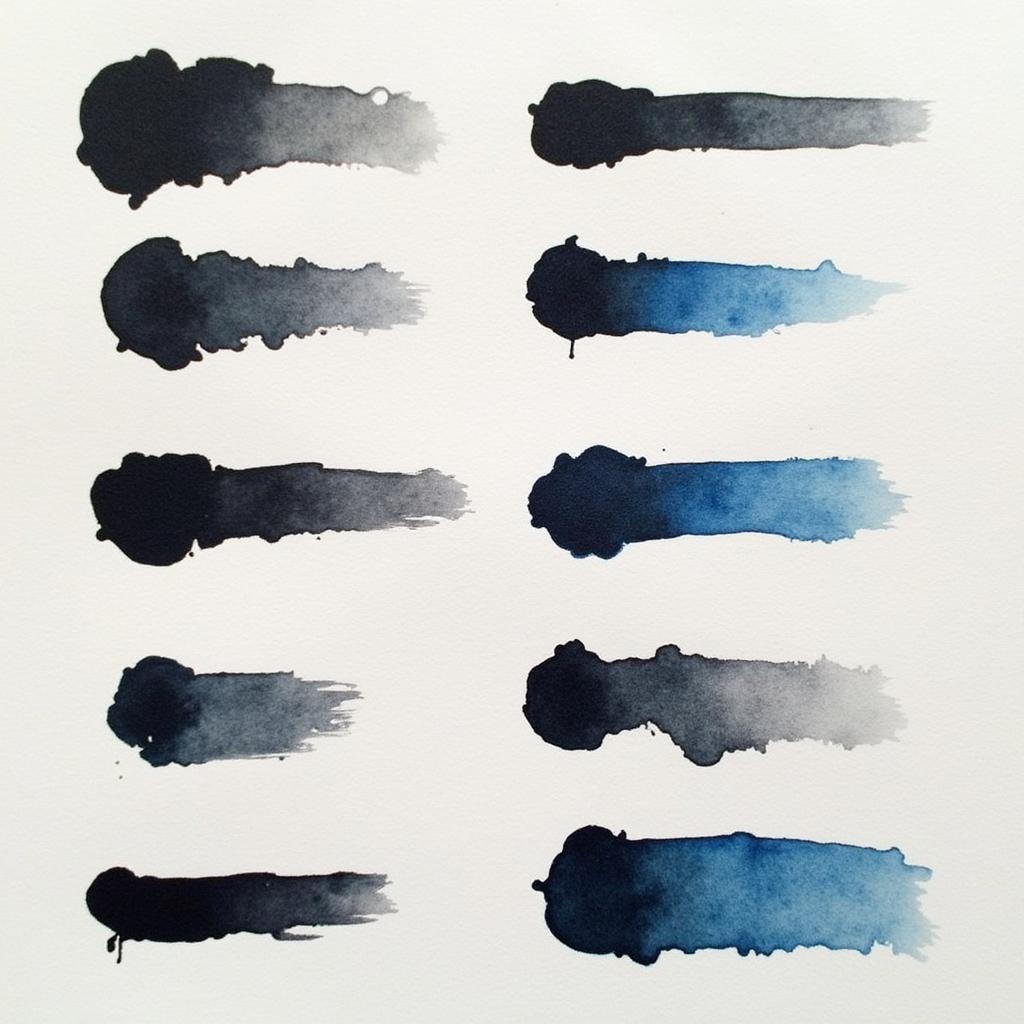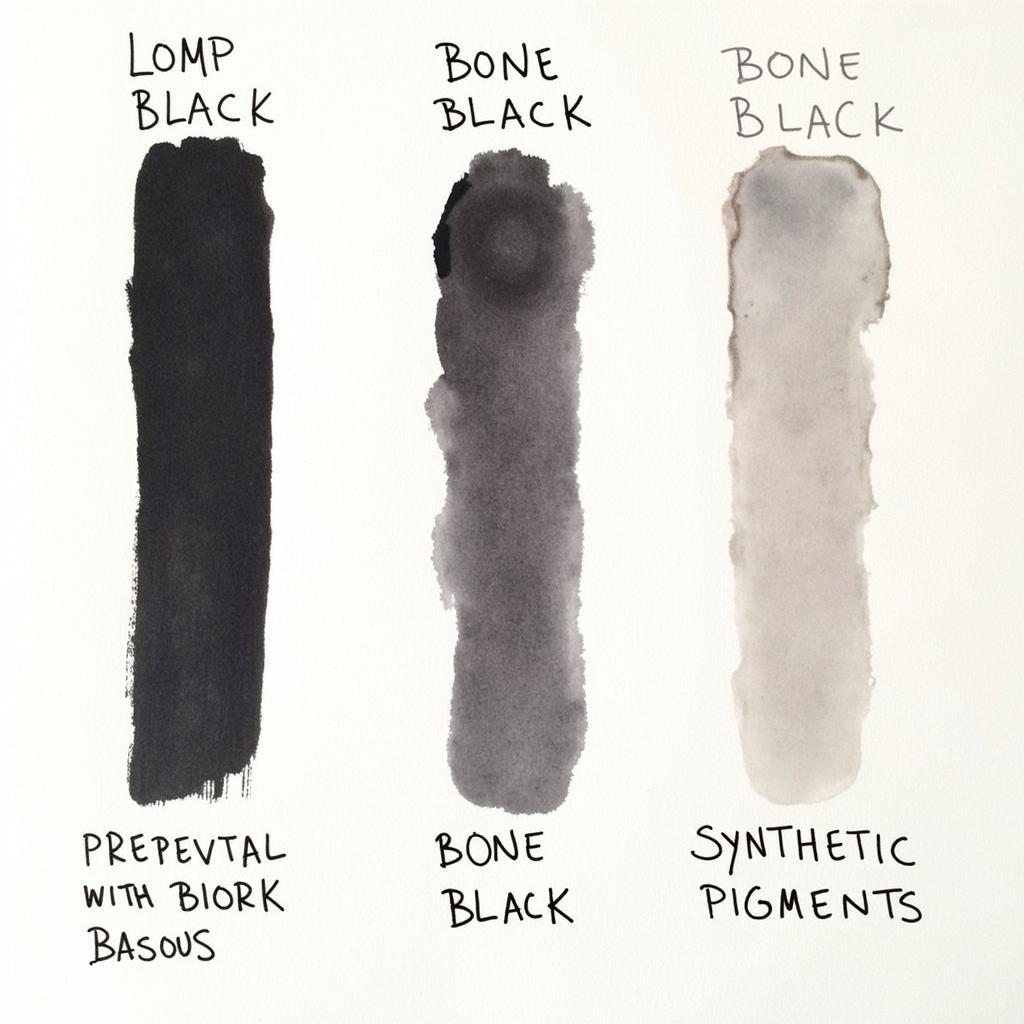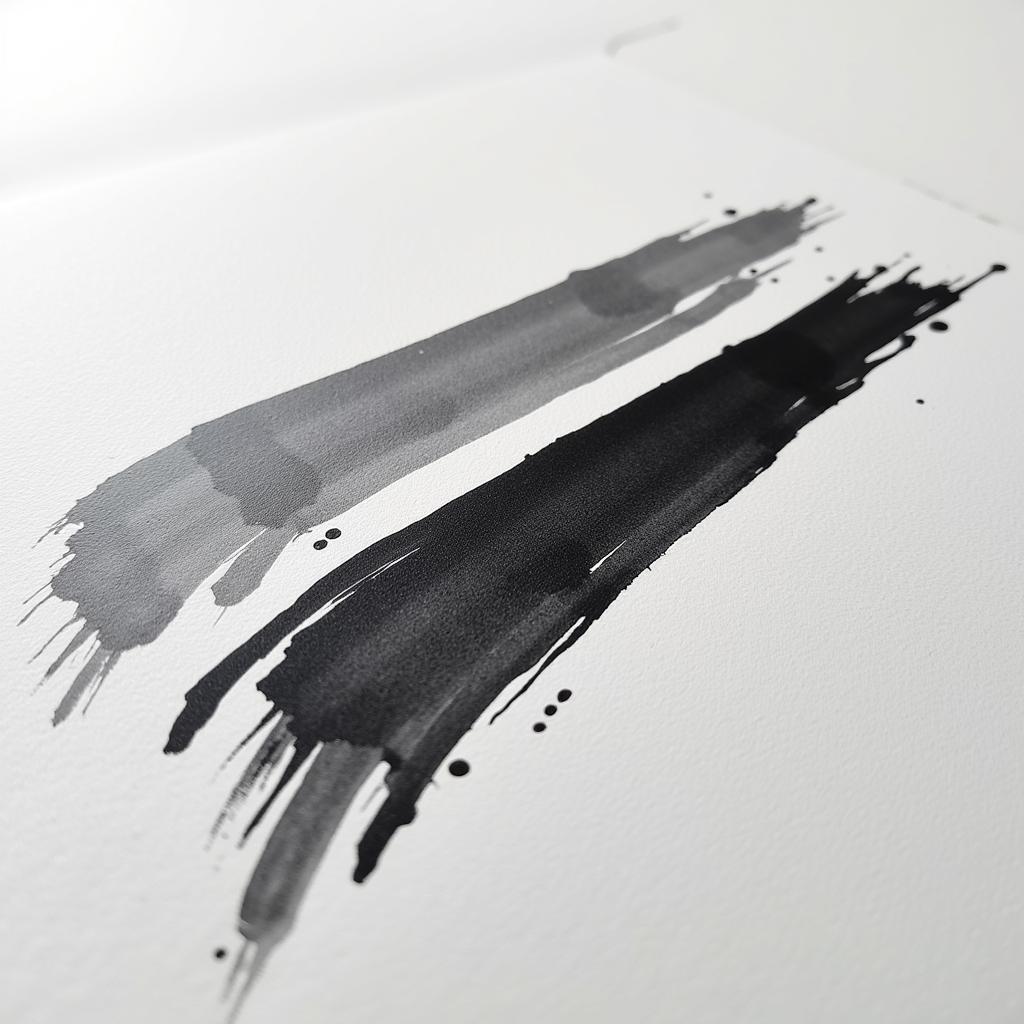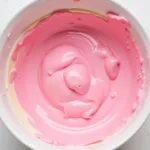India ink, a staple in art studios and calligraphy practices, is often perceived as simply black. But is it truly just black? This article delves into the nuances of India ink’s color, exploring its composition, historical uses, and the subtle variations that make it so unique. We’ll uncover the rich history and complex nature of this timeless medium.  India ink color variations on different paper types
India ink color variations on different paper types
Decoding the Depth of India Ink’s Hue
While generally considered black, India ink possesses a depth and complexity that goes beyond a simple monochrome. Its traditional composition, using lampblack or bone black pigments suspended in a binder, often shellac, contributes to its rich, almost lustrous appearance. This binder allows for smooth application and creates a unique interaction with light, resulting in a color that can range from a deep, warm black to a cooler, slightly bluish-black depending on the concentration and the surface it’s applied to. This is particularly noticeable in calligraphy, where varying ink thicknesses create gradations of tone.
A Historical Journey Through India Ink’s Pigmentation
The name “India ink” itself hints at its geographical origins and the evolution of its color. Historically, the finest quality ink was imported from India and China, where it was crafted from natural ingredients like lampblack, a byproduct of burning oil lamps. This process resulted in a fine, pure black pigment. Later, bone black, created from charred animal bones, offered a slightly warmer, brownish-black alternative. Modern India inks often utilize synthetic pigments, allowing for greater consistency and a wider range of blacks.
Exploring Different Types of Black Pigments in India Ink
The specific pigment used dramatically influences the final color of India ink. Lampblack tends to produce a cooler, slightly bluish undertone, while bone black offers a warmer, more brownish hue.  Comparison of black pigments in India ink Modern synthetic pigments provide a broader spectrum, allowing artists and calligraphers to achieve specific black tones for their work. For instance, some inks are formulated to be intensely black, ideal for bold lines, while others are designed for subtle washes and delicate details.
Comparison of black pigments in India ink Modern synthetic pigments provide a broader spectrum, allowing artists and calligraphers to achieve specific black tones for their work. For instance, some inks are formulated to be intensely black, ideal for bold lines, while others are designed for subtle washes and delicate details.
when do trees bloom in colorado
Influencing Factors on India Ink’s Perceived Color
Several factors contribute to how we perceive the color of India ink. The paper or surface plays a significant role. A highly absorbent paper will often make the ink appear slightly lighter, while a smooth, non-absorbent surface can enhance the ink’s sheen and depth. The thickness of the ink application also influences the color. Thin washes can appear almost gray, while thicker applications result in a more intense black. what to do in montrose colorado Even the lighting conditions can alter our perception, with some inks exhibiting subtle blue or brown undertones under different light sources.
How Paper and Surface Affect India Ink’s Appearance
The texture and absorbency of the paper or surface can significantly impact the final appearance of India ink. For instance, a rough watercolor paper will absorb the ink differently than a smooth, coated calligraphy paper, affecting the color saturation and edge definition. This interaction between ink and paper is a crucial element in achieving desired artistic effects.
“The choice of paper is as crucial as the ink itself. It’s a dialogue between the two that brings the art to life,” says renowned calligrapher Amelia Dubois.
Is India Ink Truly Black?
So, is India ink truly black? While classified as black, its rich composition and interaction with light and surface reveal a spectrum of shades and undertones. Understanding these nuances allows artists to fully exploit the medium’s expressive potential, creating works that are both bold and subtle, traditional and innovative. is khaki a color or type of pants
“India ink isn’t just a color; it’s a material with its own unique personality. It’s about understanding its character to unlock its full potential,” adds ink maker and artist, Julian Reyes.
 Detail of India ink calligraphy strokes
Detail of India ink calligraphy strokes
Conclusion
India ink, more than simply “black,” offers a rich tapestry of tonal variations. From its historical origins to its modern formulations, this versatile medium continues to captivate artists and calligraphers alike. By understanding the nuances of its color and the factors that influence its appearance, we can appreciate the true depth and complexity of this timeless artistic tool. what color is saffron yellow Understanding what color India ink truly is enhances its creative application.
FAQ
- What is the main ingredient in traditional India ink?
- How does lampblack differ from bone black in terms of color?
- What are the advantages of using synthetic pigments in modern India ink?
- How does the paper type affect the appearance of India ink?
- Can India ink be used on surfaces other than paper?
- Are there different grades or qualities of India ink available?
- How can I prevent India ink from fading over time?
Need assistance with your color choices? Contact us at 0373298888, email us at [email protected], or visit us at 86 Cầu Giấy, Hanoi. We have a 24/7 customer support team.

